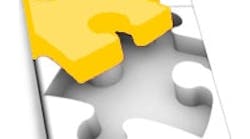By Dr. Rolf Birkhofer, CodeWrights GmbH, and Stefanie Schindler, CodeWrights GmbH
Until recently, end users, engineering firms and system integrators involved in device integration have had a tough time deciding whether to standardize on EDDL or FDT. Thankfully, recent developments have put an end to these times. Now users can achieve time reductions in device commissioning and device maintenance without impediments from the underlying device integration technology. The iDTM which "interprets" the DDs or EDDs of all HART and Foundation fieldbus field devices, bridges the device integration divide and allows devices to be integrated in any IEC-62453 FDT frame application.
The Technology
iDTM's interpret DDs/EDDs for HART and Foundation devices, enabling the integration of devices into a FDT frame application without the requirement of a dedicated device DTM. In this context, the FDT-based infrastructure is used for open communication from the control room all the way down to the field device.
The iDTM is based on the official DD interpreters (HART SDC625 and FF-DD Services) provided by the protocol-responsible foundation. This ensures that the DDs/EDDs are read in the same manner in the FDT frame application as any other application for a proprietary control system, handheld configurator or native DD/EDDL-based asset management software. This allows the iDTM to support all registered HART and Foundation fieldbus devices.
Most important, the use of the binary DD format allows the user to experience the same functionality as intended by the device manufacturer through the DD/EDD. This allows end users to rest assured that DD/EDDL devices, when coupled to a FDT frame application, can access all parameters specific in the DD/EDDL. All this is made available through a single access point, the FDT frame application.
The Frame Applications
Endress+Hauser FieldCare and Rockwell Automation FactoryTalk AssetCentre Process Device Configuration (PDC) include the iDTM in their product offering. End users who want to connect to all of their Foundation fieldbus and HART devices in a different frame can find out more at www.codewrights.biz.
The Benefits
iDTMs enable end users to include all HART and Foundation fieldbus devices installed in the plant in a common FDT-enabled control and asset management strategy. The solution combines the familiar DTM handling and rich user interface with complete device functionality as described in the DD/EDD.
Like DTMs, an iDTM operates in any applicable communication structure in the plant, enabling the DD/EDD-based devices to use the open, vertical communication structure supported by FDT. As a result, users can access these devices from a central location such as a control room.
Technology Outlook
In 2007, a new integration technology began to evolve, called Field Device Integration (FDI) with the goal in mind to combine the benefits of FDT and EDDL technology. Once FDI becomes a standard, each device vendor will be issuing so-called "Device Packages." These packages are anticipated to contain EDD parts and optional software parts that conform to FDT. An enhanced iDTM is planned to be able to support such packages for a simple, safe and straightforward migration path.
[sidebar id="3"]
Conclusion
Today, iDTMs are available and create a bridge between EDDL and FDT for HART and Foundation fieldbus devices. They provide a pragmatic and future-proof solution that removes pressure customers face with the current device integration dilemma. The iDTM HART solution has been available since March 2008, while the iDTM for Foundation fieldbus was launched early 2010.
It is hard to predict the future and pinpoint when the first products with FDI technology will be available on the market. With the iDTM solution, users can now take advantage of the wide availability of DD/EDD files and the richness and ability to execute application code provided by FDT.
All material contained within this article is the copyright of its respective owner




